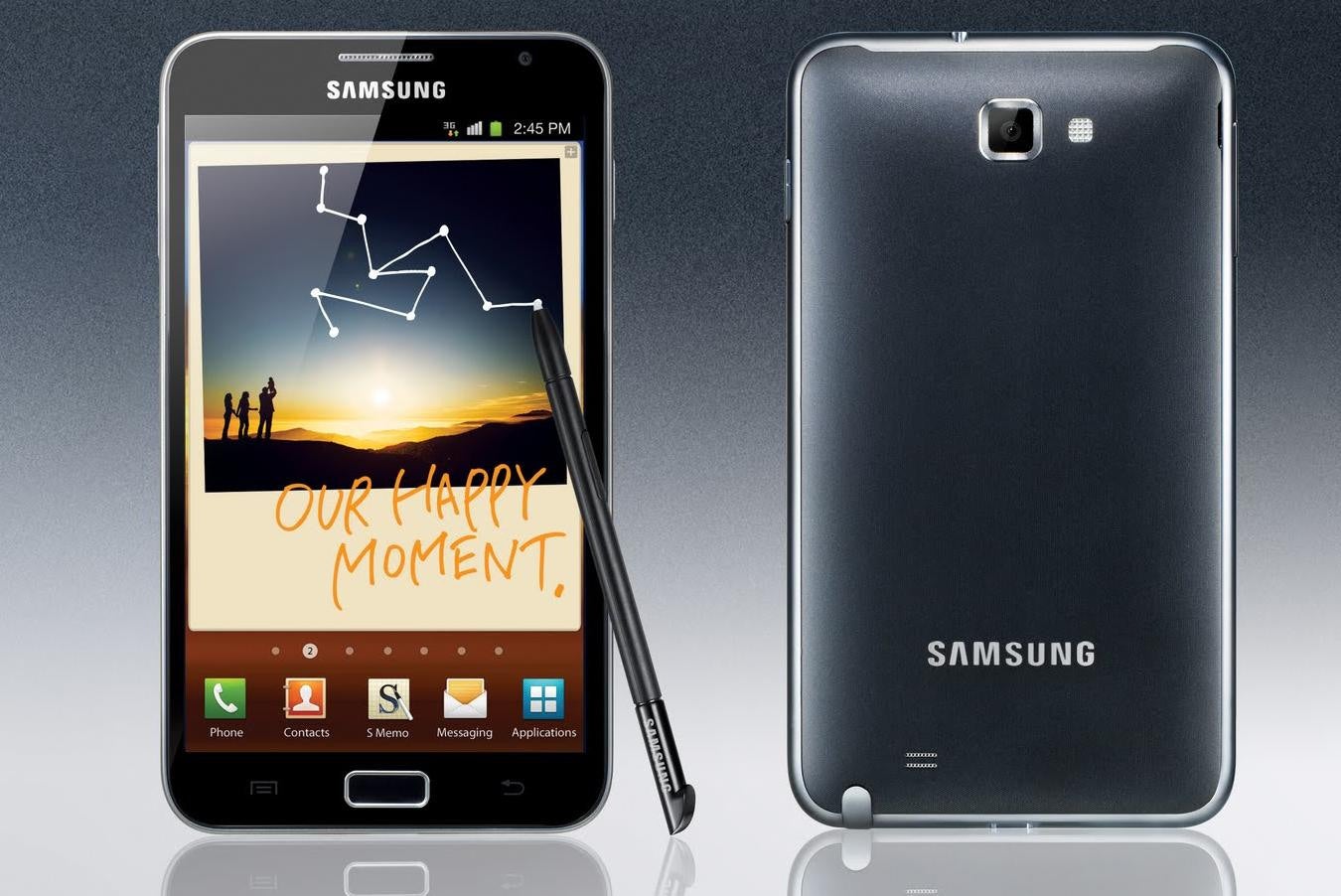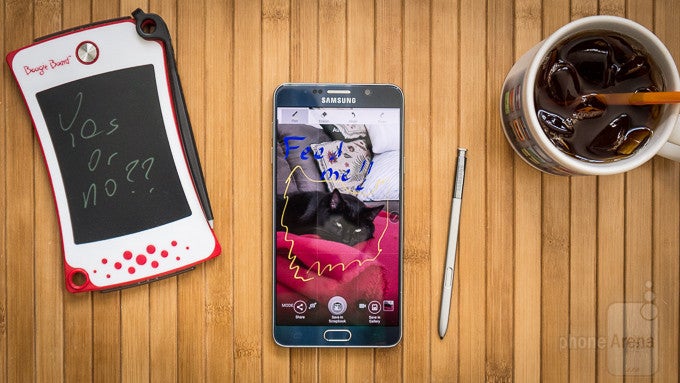From stardom to lessons learned, a look back at the Samsung Galaxy Note line

Looking across the smartphone landscape, there are few lines that manage to remain relevant each and every time a new model is announced. You could argue that there are three major lines that take priority. Apple's iPhones have continually been trendsetters, while Samsung's Galaxy S line has somehow managed to keep equal space. However, there's another line in Samsung's stable that completes the trifecta – and that's none other than the Note series.
Ever since its inception back in 2011, a long six years ago when you think about it, the Note line has grown incrementally with each release. There's no shortage of surprises with this line, as the evolutionary improvements and added features have diversified its portfolio. Impressively enough, too, it popularized the notion of owning a "big" smartphone – while also somehow resurrecting the stylus in the process as well.
Time heals all wounds, right? That might be the case as more and more leaks of the upcoming Samsung Galaxy Note 8 make it one of the phones to beat this coming holiday season. Before we get to that, however, we need to revisit the previous phones to see exactly why this line will continue to thrive. So with that, let's take a look back the Samsung Galaxy Note line!
Samsung Galaxy Note
Larger Than Life
When it comes to making an impression, the original Samsung Galaxy Note from 2011 ensured that it wasn't going to be easily forgotten. That's partly because it popularized the new form-factor that it somehow managed to establish in the process, the "phablet," which blended qualities of a phone and tablet.
There was no denying that it was a conversation starter when it was first released, due to the fact that few phones at the time dared to venture into uncharted territory with a screen size that eclipsed 5-inches. Well, that's partly what made the Note so memorable, as its 5.3-inch display really put to shame everything else before it. Size alone wasn't the only thing going for this phablet!
Complementing the size was none other than the reintroduction of the stylus, or in this case, the S Pen. In an era where capacitive screens seemingly spelled the end of the stylus, the Galaxy Note re-purposed it to do significantly more than being just another pointing device. Instead, the S Pen added to the interaction experience with the phone, and since then, we haven't looked back.

Samsung Galaxy Note II
Iterative Improvements
No one really knew how the Note was going to play out for Samsung, since it was regarded as a gamble. Apparently, though, it seemed like consumers were digging these so-called phablets. And of course, Samsung continued the trend as they delivered its successor in the Samsung Galaxy Note II in the fall of 2012.
While they continued the trend with its larger-than-life status, the Note II seemingly received just the typical iterative improvements you’d expect with any successor. Well, Sammy managed to somehow push the boundaries more with its display, which now stretched out to a larger 5.5-inch 720p Super AMOLED display. Beyond that, the Note II received all the usual hardware upgrades in the process – like its larger battery capacity, newer chipset, double the RAM, and much more.
The biggest changes weren't necessarily cosmetic or related to the hardware, but rather, it was the iterative software improvements that made the S Pen even more functional than before. The new arsenal included the new Air View functionality, which made it mimic the functions of a mouse cursor as the S Pen was hovered above the display – allowing it to preview messages, images in the gallery, and much more!
Samsung Galaxy Note 3
Moving towards a more sophisticated design
Samsung's reputation in the design department during the time paled in comparison to some of its rivals, seeing that the company heavily favored plastic more so than other materials. And by the time the Samsung Galaxy Note 4 arrived on the scene, they decided to change things up a bit. More specifically, they sprinkled just a smidgen of premium to the design of the phone – making it a departure from the normal plastic constructions that Sammy was known for.Looking at the Note 3, the biggest change to the design came in the form of a faux-leather pattern on the rear cover, complete with faux stitching. Even though it wasn't real leather, it did produce a somewhat more sophisticated look that complemented the Note 3's productivity value, but beyond that, the phone also saw some firsts in the series. For one, the screen size grew to a whopping 5.7-inches, bringing along 1080p resolution as well! Its rear camera also packed in more pixels as it featured a 13-megapixel snapper. And lastly, it was also the first time we saw an IR blaster and a microUSB 3.0 port in the series.
These were definitely big improvements for the series, which some would argue to be a bigger leap over its predecessor. However, it was the attention to adopting a more sophisticated design that made showed Samsung's
Samsung Galaxy Note 4
Evolution at its finest
As the Note 3 showed Samsung's willingness to change in the design department, the arrival of its successor in fall of 2014 brought forth the biggest evolutionary changes to the series, which some proclaim to be the best handset in the Note line. Following after the radical design change that came along with the Galaxy Alpha, Samsung brought the same new, premium design language to the Note 4. And boy was it a stunning looking phone!
As if 1080p resolution wasn't enough, the Note 4 was one of the few phones at the time to boast a higher resolution of Quad-HD – making it well above the curve. In addition, it also saw the arrival of the finger print sensor, which was integrated into the home button. This was without question the phone to beat during the holiday season of 2014, and for many people, it's still widely viewed as the best smartphone in the series!
Samsung Galaxy Note Edge
A curvy experiment
Introduced alongside the Note 4, the Note Edge's distinctive feature was none other than its one-sided curved screen, which offered some additional multi-tasking features and notifications. From a visual perspective, it definitely seemed odd at first, but it still exhibited the same premium design language of its sibling. Considering that it fetched for a couple hundred more dollars than its sibling in the Note 4, the Note Edge's pricey cost prevented it from reaching the same achievements obtained by the Note 4.
Samsung Galaxy Note 5
Finally, metal in the design
By the time 2015 rolled around, Samsung showed the world earlier in the year that it wasn't afraid to experiment with premium materials. Sure, the Note 4 proved to be a more premium looking handset than anything else previous in the line, but the Note 5 ended up taking it to an even higher level with its glass and metal construction – the same design language that was introduced by the Galaxy S6 line earlier in the year.
Yes, the Note 5 was a gorgeous looking phone thanks to the new facelift, but the 5th generation model also saw much-needed improvements as well – like a tweaked fingerprint sensor that made it easier to unlock the phone, and a tweaked S Pen that mimicked the 'clicking' sound of a pen. Much like its predecessors before it, the Note 5 was a specs powerhouse that made it the most cutting-edge device at the time of its release. It even added new features like wireless and rapid charging! And throw in the fact that it performed handsomely in several areas, it didn't take a rocket scientist to believe it was a force to be reckoned with.

Samsung Galaxy Note 7
A hard lesson learned
Things were riding smoothly by the time the Note 7 was announced, and once again the phone proved to be a big hit amongst the tech community – garnering extremely favorable reviews! And it was deserving, naturally, due to its even better-looking design, powerhouse specs, raw performance, and new features. In particular, it boasted an iris scanner, a first in the series, which gave users an alternative form of unlocking the phone.
However, things quickly took a turn for the worse after reports started surfacing about phones randomly exploding. Consequently, the phone was eventually banned on all US flights, leading to the eventual recall that some regarded to be a slow response from Samsung. This was undeniably a hard lesson learned, as the phone seemingly was wiped out of existence.

So, now that we know what has transpired through the years, all eyes will be on the announcement of the Samsung Galaxy Note 8. Without question, this should be a pivotal point for the company after the crash and burn of its previous phone in the Note 7. Considering that there's a reputation to uphold here, we're confident that Samsung will be taking all matters about the phone very seriously.









Things that are NOT allowed: